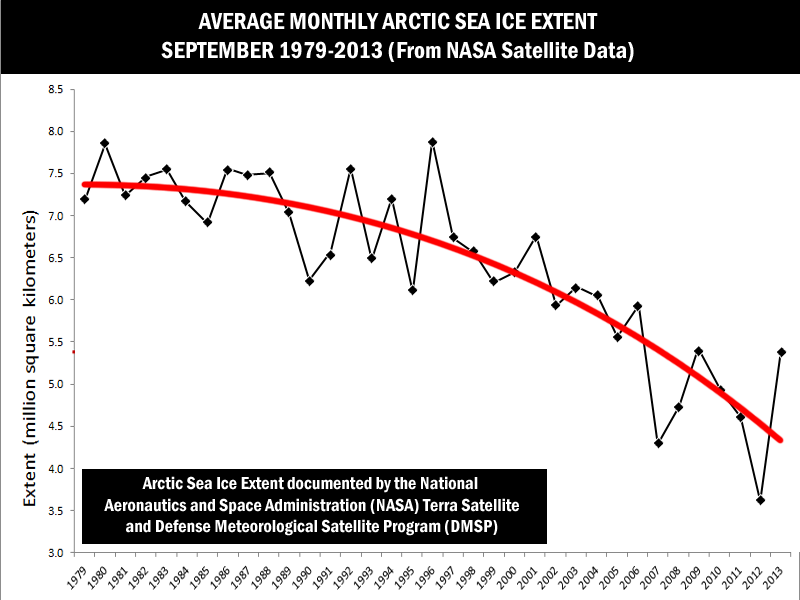“End-point bias” is a well-known psychological tendency to interpret a recent short-term fluctuation as a reversal of a long-term trend. When scientists reported a significant increase in the extent of Arctic sea ice in 2013, a FoxNews.com story evoked end-point bias by contrasting the historically low previous year with the presumed recovery and de-emphasizing the clear downward trend since 1979.
A study by Annenberg Public Policy Center (APPC) distinguished research fellow Bruce Hardy and APPC director Kathleen Hall Jamieson finds that even liberals and moderates who are suspicious of the accuracy of Fox News can be influenced by such decontextualized information.
Liberals and moderates exposed to the Fox News story, “Arctic sea ice up 60 percent in 2013,” were less likely to correctly answer questions about the sea ice extent and less likely to predict the downward trend – the same outcome seen in a prior study with conservatives who were shown the story.
The study, “Overcoming endpoint bias in climate change communication: the case of Arctic sea ice trends,” was published online this month in the journal Environmental Communication.
The researchers found that it is possible to overcome end-point and ideological bias by actively engaging people in understanding the overall scientific trend. Using a method that they call LIVA – Leveraging-Involving-Visualizing-Analogizing – the authors found that they could counter the effects of selective information and increase the likelihood that an audience will draw correct inferences from scientific information.
Showing the whole trend
“The LIVA model invites the audience to make sense of the changes over time in the whole trend to overcome end-point and ideological bias,” said Hardy, an assistant professor at Temple University’s School of Media and Communication. “When we ask people to answer questions about the data points across the years, as opposed to one fluctuation, they’re more likely to understand the downward trend and to accept the existence of climate change.”
The study is a follow-up to a study of conservatives published in 2014 in the Proceedings of the National Academy of Sciences. In that study, exposure to the misleading FoxNews.com story on the Arctic sea ice was found to make conservatives less likely to correctly answer a question about the extent of the ice or correctly predict the future trend. More on the earlier study is here.
The effect of the FoxNews.com story was even greater for liberals and moderates than it was for conservatives, according to the current study, suggesting that “they had more room to move than conservatives who were already predisposed to forecast greater sea ice.”

The study was based on two waves of survey data collected from Research Now’s US Consumer Panel from May 28-June 4, 2014 and August 20-September 3, 2014. The study involved 958 participants, randomly divided into three groups: 326 were shown the FoxNews.com article, 305 were shown the FoxNews.com article plus the LIVA message, and 327 were shown an unrelated control story, about baseball.
The group with the LIVA message was shown a 22-second animated graphic that visualized the decrease in the extent of Arctic sea ice over 34 years as a series of plotted points connected by a downward trend line. The LIVA group also was shown an analogy to help to illustrate the trend.
Opportunities for news sites
The study concludes that news outlets’ online sites make it possible for them to communicate with iterative graphics and incorporate the LIVA model. “The model’s promise lies in its potential to improve decision-making by the public and policy-makers,” the authors wrote. They said the LIVA model could be used by government science agencies and news organizations, among others. The model also could help blunt the end-point bias “lurking in headlines” such as this one from the Washington Post on January 8, 2016: “US stock market drops, ending its worst week since 2011.” Without further context, “that headline could invite an investor to defy the advice of experts and unload stocks,” the authors said.
To download this news release, click here. The study is posted here on Taylor and Francis Online, the publisher of Environmental Communication.

